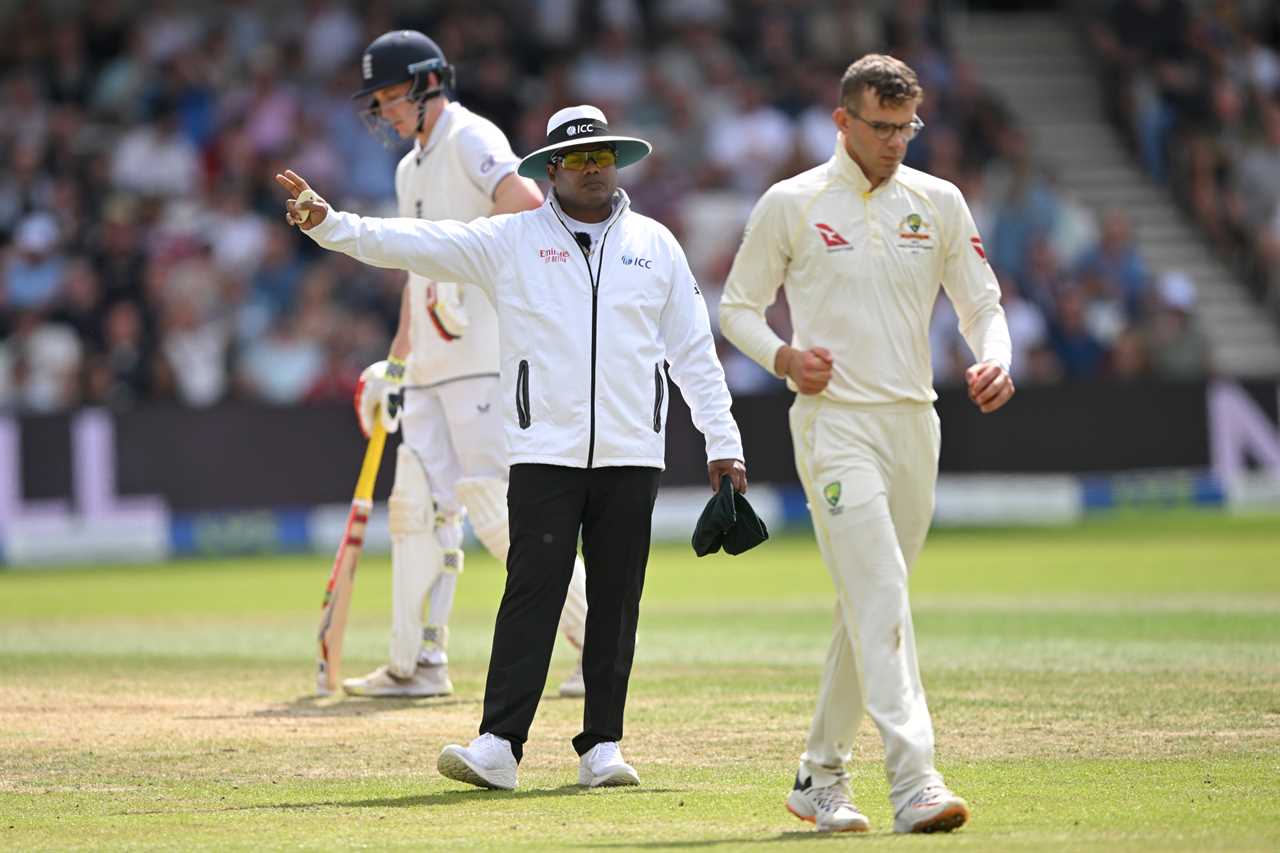THE rules of cricket can sometimes be confusing for those who do not know the rules inside out.
As the fourth test of the 2023 Ashes continues at Old Trafford, let’s take a look at what a no ball means.

A no ball in cricket is a delivery which does not conform to the rules of the sport.

Umpire Nitin Menon signals after Australian spin bowler Todd Murphy bowls a no ball during the Ashes against England
What is a no ball in cricket?
A no ball in cricket is a type of illegal delivery from the bowler to a batter.
It is a delivery that does not conform to the rules of the sport.
An example of a no ball could be a delivery that is too high or too short.
It could also be bowled from the wrong place.
No balls are called, and signalled, by the umpire.
The umpire will signal a no ball by raising an arm at shoulder height.
The fielding team must then bowl another, legitimate, delivery.
A no ball does not count as one of the bowler’s six legitimate balls in one over.
There is no limit on the number of no balls that a bowler can bowl in one over but every time a no ball is bowled, the batting side get an extra delivery.
How many types of no balls are there in cricket?
There are multiple ways a fielding team can bowl a no ball in cricket.
There are 15 types of no balls, which are:
- Front foot no ball
- Back foot no ball
- Waist height no ball
- No ball for ball bouncing over the head
- No ball for ball bouncing multiple times
- No ball for delivery pitching outside the playing area
- No ball for bowler breaking wickets while delivering the ball
- No ball for ball throwing
- No ball for delivering underarm
- No ball for throwing the ball towards striker before delivery
- No ball for failure to notify umpires the mode of delivery
- No ball for fielder intercepting the delivery
- No ball for breaching the number of fielders on the on side
- No ball for delivery coming to rest before reaching the striker
- No ball if wicket-keeper is in front of the stumps

A bowler’s foot has to be behind the line when delivering a ball down the pitch – as happened to Chris Woakes during the fourth Ashes test at Old Trafford in 2023
What is the difference between a wide and a no ball?
A wide is another type of illegal delivery to a batter in the laws of cricket.
These are judged by the umpire to be too wide to be hit by the batsman.
A wide ball results in one extra run being awarded to the batting team.
A no ball, meanwhile, results in one extra run being awarded to the batting team, as well as a free hit for the next delivery.
 Cricket NewsTips and TricksPrivacy PolicyTerms And Conditions
Cricket NewsTips and TricksPrivacy PolicyTerms And Conditions
